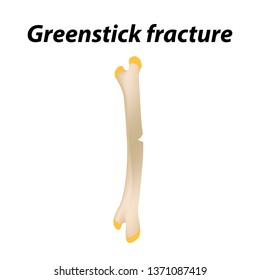Why Does Soft Tissue Therapy Hurt? Comprehending The Process
Why Does Soft Tissue Therapy Hurt? Comprehending The Process
Blog Article
Web Content Written By-Boysen Feddersen
When you undergo soft Tissue therapy, you could discover it remarkably uncomfortable. https://autoinjurychiropractornea29406.bloggosite.com/39881050/signs-you-might-requirement-soft-tissue-therapy-for-discomfort-relief emerges as stress is related to stressful muscles and damaged tissues, activating your discomfort receptors. While it can feel upsetting in the moment, there's a reason behind this sensation. Recognizing what takes place in your body during these treatments can aid you appreciate the process. So, what exactly is taking place below the surface area?
The Physiology of Discomfort During Soft Tissue Therapy
When you undergo soft Tissue therapy, your body's response to pain is a complex interaction of physiological processes. As the therapist uses stress, your body triggers pain receptors, sending out signals to your brain. https://www.wrcbtv.com/story/44009749/should-i-see-a-chiropractor-vs-physiotherapist-for-neck-pain activates the release of natural chemicals, such as substance P and glutamate, which intensify the sensation of pain.
Your muscle mass may also tighten in action, additional complicating the experience. In addition, your body might launch endorphins, all-natural pain relievers that can assist reduce some pain.
The communication between these processes can create a distinct experience for every individual. Comprehending this physical feedback helps you navigate the sensations throughout therapy, allowing you to value the balance in between pain and the capacity for recovery advantages.
The Role of Pain in the Recovery Refine
Although pain during soft Tissue treatment can feel frustrating, it plays a critical function in the healing process. When you experience pain, your body is signaling that it's functioning to fix broken tissues. This reaction helps increase blood flow to the affected area, providing important nutrients and oxygen needed for healing.
Furthermore, https://autoinjurychiropractornea05050.worldblogged.com/39075313/with-important-sporting-activities-massage-methods-at-your-fingertips-discover-how-to-open-your-full-possibility-and-boost-your-recovery-like-never-in-the-past can advertise the release of endorphins, your body's natural medicines, creating a sense of relief post-treatment. Embracing this pain can help you comprehend your body's restrictions and motivate you to deal with underlying concerns.
While it's uneasy currently, this procedure is important for long-term recuperation and improved function. Identifying pain as a vital part of healing can equip you to stay dedicated to your therapy.
Tips for Managing Pain Throughout and After Therapy
Handling pain during and after soft Tissue therapy can dramatically boost your general experience and recuperation.
To start, interact openly with your therapist about your pain degrees; they can change strategies as necessary. Making use of deep breathing strategies can likewise help you loosen up and ease pain.
Consider applying ice to the cured area post-session to lower swelling and numb soreness. Staying moisturized aids in the recuperation procedure, so consume lots of water.
Gentle extending and light motion after therapy can promote blood flow and convenience stiffness. Lastly, ensure you obtain appropriate remainder to enable your body to recover.
Executing these tips can make your soft Tissue treatment extra manageable and pleasurable.
Final thought
In conclusion, while soft Tissue treatment can be uneasy, it's essential to identify that this discomfort plays a vital role in your healing journey. By understanding the physical feedbacks at play, you can approach the therapy with a much more positive mindset. Bear in mind, the initial pain frequently paves the way to relief as your body launches endorphins. Accept the process, and do not think twice to use the suggestions for managing discomfort to enhance your experience and recovery.
